The 1937 Yearbook "The Oracle"
To see this one as it was published, download and install the Old English font.
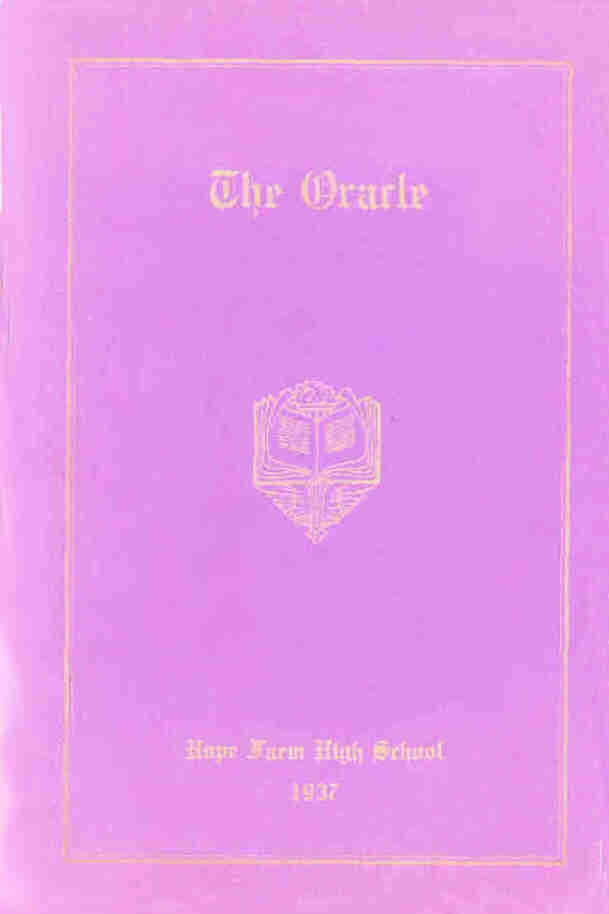

|
| The Oracle Published by the graduating class of 1937 |
"He is the conqueror who first conquers himself" |
| Class Colors: Royal Purple and
Gold Class Flower: Pansy |
| Hope Farm
High School |
Hope Farm,
N.Y. |
 |

|
| Foreword |
| To all who read this
annual: We have prepared this book that you who read it may be informed and reminded of our years spent at Hope Farm. It is our hope that our imperfect example may be an inspiration toward finer citizenship and higher achieve-ments in future classes. |
| Acknowledgements |
| We, the graduating class of 1937, extend our sincere thanks and earnest appreciation to the teaching staff who have guided us in our scholastic advancement, to all the staff members who have aided us in becoming better citi-zens, and to the Board of Directors who made possible the care we received from this school and community. |
 |
 |
| Dedication |
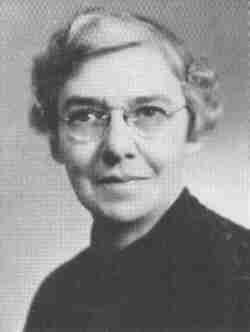 |
| To Miss M. Josephine Thomas, whose unfailing interest and friendly instruction throughout our school years have been our inspiration and help, this book is affectionately dedicated. |
 |
 |
| Board of
Directors Hope Farm |
| Arthur W. Butler,
President Henry R. Labouisse, Jr., Vice President Mrs. Henry R. Labouisse, Jr., Secretary Charles C. Gifford, Treasurer Livingston T. Merchant, Assistant Treasurer Henry G. Barbey, Chairman Executive Committee Hugh D. Auchincloss Joseph C. Baldwin, Jr. Mrs. Henry G. Barbey Miss Charlotte M. Boyd The Rev. Roelif H. Brooks, S.T. D. Mrs. Arthur W. Butler Miss Zelina T. Clark Mrs. Charles C. Gifford Mrs. Russell A. Hibbs Mrs. Charles B. Kaufmann Miss Susan V. Ord Theodore B. Russell, M.D. Mrs. Alfred Seton Alan De Forest Smith, M.D. The Rt. Rev. Ernest M. Stires, D.D. |
| Executive
Staff |
| Frederick G. Behrends,
Director Matilda Misner, Assistant to Director |
 |
 |
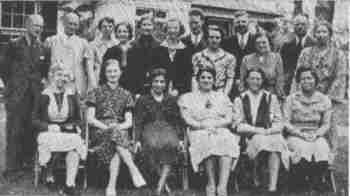 |
| Teaching
Staff |
| M. Josephine Thomas, B.S. . . . . .
. . . . . . . . . . . . . . . . . . . . . . Supervisory
Principal Mapledoram Fink . . . . . . . . . . . . . . . . . . . . . . . . . . . . . . . . . Administrative Principal Ethel Haines, B.Ed. . . . . . . . . . . . . . Librarian, Psychology, Economic Geography Frederick W. Prater, Jr., M.A. . . . . . . . . . . . . . . . . . . . . . . . . . . Mathematics, Physics Ruth S. Ferguson, B.S. . . . . . . . . . . . . . . . . . . . . . . . . . Physical Education, Science Beatrice Risley, A.B. . . . . . . . . . . . . . . . . . . . . . . . . . . . . . . . . . . . English, Dramatics Donald R. Fessler, A.B. . . . . . . . . . . . . . . . . . . . . . . . . . . . . . . . . . . . . . History, Civics Ethel S. Roath, B.S. . . . . . . . . . . . . . . . . . . . . . . . . . . . . . . . . . . . . . . Home Economics Agnes M. Salmon, B.S. . . . . . . . . . . . . . . . . . . . . . . . . . . . . Commercial Department Cecilia F. Urban . . . . . . . . . . . . . . . . . . . . . . . . . . . . . . . . . . . . . . . . . . . . . . . . . . . Music Orin S. Bacon . . . . . . . . . . . . . . . . . . . . . . . . . . . . . . . . . . . . . . . . . . . . . Industrial Arts Jack Heifner, M.A. . . . . . . . . . . . . . . . . . . . . . . . . . . . . . . Director of Boys' Athletics Helen C. Fink . . . . . . . . . . . . . . . . . . . . . . . . . . . . . . . . . . . . . . . . . . . . . Seventh Grade Rachel Q. Prater, B.S. . . . . . . . . . . . . . . . . . . . . . . . . . . . . . . . . . . . . . . . . . Sixth Grade Alma A. McNeill, A.B. . . . . . . . . . . . . . . . . . . . . . . . . . . . . . . . . . . . . . . . . Fifth Grade Mariam J. Riggs . . . . . . . . . . . . . . . . . . . . . . . . . . . . . . . . . . . . . . . . . . . . Fourth Grade Margaret E. Perkins . . . . . . . . . . . . . . . . . . . . . . . . . . . . . . . . . . . . . . . . . . Third Grade Mabel Sidelinger, B.S. . . . . . . . . . . . . . . . . . . . . . . . . . . . . First and Second Grades |
 |
 |
| History of
Hope Farm |
| Those
interested in Hope Farm will find that its origin, growth and purpose form
a colorful history. In 1906, Bishop Greer, then head of the Diocese of New York, Dr. Russell A. Hibbs, and Miss Florence Rapallo, who were interested in opening a home for children, purchased a tract of land near Millbrook, New York, from the Brothers of Nazareth, who had started a school for boys on this land called Priory Farm. Already standing was Main House, the old monastic building erected in 1896 and used at the opening of Hope Farm for all purposes. In 1907, Hope Farm was officially opened with the Reverend Thomas R. Hazzard as Superintendent. The original Board of Directors numbered ten. The first cottage erected on Hope Farm was Daisy cottage, named "Daisy" after Bishop Greer's daughter. Work was started on this build-ing in 1910. The beatiful rock found all over the Farm served excellently in its building. It was built for little children and the head of the nursery department was Miss Misner, who is still here today as assisstant-to-director. With the completion of Daisy, sixty small children were cared for. After many years it was remodeled into a cottage for boys from ten to eighteen, and remains so today. Thirty boys and a number of staff are housed there. Plum cottage was remodeled from an old laundry into a house for small girls. By the gate of the Old Priory Farm stood a wooden farm house, and as more room was needed for the increasing number of children, this house and the adjoining land was purchased. It is called "Gate House" because it stands by the gate which is now the entrance to Hope Farm, and after remodeling, became a house for thirty boys. Miss Emily Watson, who was interested in Hope Farm, saw the need of a new building for more children. She gave money for a cottage called "Marcy Lester," which was built from chestnut wood from trees near the site of the cottage. This provided a place for some of the boys from Daisy. The city was now beginning to commit older boys and girls who needed two or three years' guidance in forming and shaping their char-acters. In 1913, a gift from Mr. Samuel Thorne made it possible to build another cottage for twenty-seven girls, which was named after his own cottage, "The Crest." Two new and important additions were built from granite obtained from the quarry on Hope Farm. These were the school and the chapel. |
 |
 |
| The
school, built in three floors, formerly serving varied purposes, now
provides rooms for the sixth grade through the twelfth grades. In the
base-ment is a well equipped work shop, where the boys receive instruction
in the industrial arts. Adjoining the shop is a greenhouse where seedlings
are started for the garden. On the second floor is a commercial department
and a laboratory well equipped for teaching the sciences. On the third
floor are offices and a homemaking department where the girls learn a very
thorough course in Home Economics.
In 1917, Mrs. Betty V. Hazzard became Superintendent. In 1921, Ledge and Greer cottages were built. Ledge, so named because it stood on a ledge of rock, became a teachers' home, but in 1934 was con-verted into a girls' cottage. Greer, also a cottage for girls, is a memorial to Bishop Greer. June, 1927, brought another change. Mr. Frederick G. Behrends, a pro-fessor of Cornell University, took the directorship of the Farm. With the coming of Mr. Behrends, and through his efforts, changes in plans and policies gradually took place, leading to increased progress and and effect-iveness. Through its doors now come children, usually not older than twelve, to grow up in a "Cottage Community and School for Children," a number of them from normal parentage and homes, some because of par-ental separation, and others because of the loss of one parent. Hope Farm has developed under the influence of Mr. Behrends into a model Protestant school and home for girls and boys. In 1930, a new cottage for boys was completed, built in the memory of Miss Florence Rapallo, who died in November, 1928. In 1932, Dr. Hibbs passed away, leaving behind a host of affectionate friends. Mrs. Hibbs has perpetuated his interest in the school and is loved equally well by all who know her. In January, 1932, the library building was completed. In this building are classrooms for the first five grades and a large library containing 6000 vol-umes. Some of the more recent additions are the central dining room for boys, and the post office which was made an official government office in 1935. There is a large garden where many different vegatables are grown and canned for winter use, with the help of the boys. A store, laundry and in-firmary make this a complete community. A full four-year high school course makes it possible to secure a Regents diploma in academic and com-mercial courses. From its doors children graduate, go away; some to college under the supervision of the executive staff, some to work, and some to marry, but all better fitted and happier for their years at Hope Farm. "Peace be within thy walls, and prosperity within thy palaces." -- Abstract of English Theme written by Helen Barbieri. |
 |
 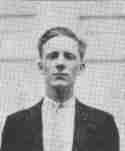 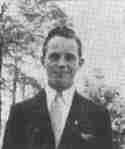  |
Senior Class HELEN LENITA BARBIERI (Barby) "And like another Helen, fired another Troy." Entered 1929, in fifth grade. Lived at Greer, Ledge. Choir, basketball, baseball. ROBERT HENRY DAVIS (Red) "The more he was with vulgar hate oppressed, the more his fury boiled within his breast." Entered 1931, in seventh grade. Lived at Rapallo. Choir, football, basketball. Boys' Citizen Club. ROBERT KEMP IRWIN (Bob) "Language was not powerful enough to describe the infant phenome- non." Entered 1934, in tenth grade. Lived at Rapallo. Football, basketball, base- ball. Boys' Citizen Club. Class Treasurer. EDWARD ARTHUR JOHNSON (Mope) "I will sit down now, but the time will come when you will hear me." Entered 1930, in sixth grade. Lived at Gate House. Football, basketball, hockey. Boys' Citizen Club. Vice- President. |
| of 1937 VIOLA HANNAH JUDGE (Jud) "Feminine vanity; that divine gift which makes women charming." Entered 1930, in sixth grade. Lived at Greer, Crest. Hockey, basketball. CLIFFORD ANDREW PETTERSON (Pete) "He wreathed the rod of criticism with roses." Entered 1925, in second grade. Lived at Marcy, Daisy. Football, hockey, basketball, baseball. Boys' Citizen Club. Class Secretary EVELYN GABRIELLE PILZER (Pill) "With words we govern men." Entered 1934, in tenth grade. Lived at Greer. Basketball, choir. TITUS MARTIN SUNRIEMI (Tite) "Thought is often bolder than speech." Entered 1928, in fourth grade. Lived at Daisy, Rapallo. Hockey, football, basketball. Boys' Citizen Club. Class President. |
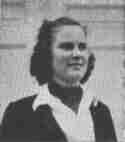 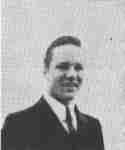  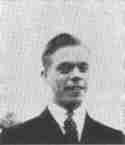 |

|
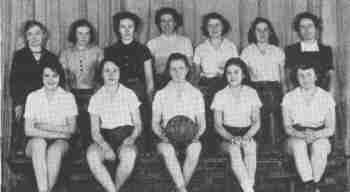 |
| Girls'
Sports |
| Miss Ferguson coached
the girls in their field hockey, basketball and soft ball baseball. The
major sport is field hockey, in which seven games were played. The girls,
playing good hockey, won two games, tied four and lost
one. Basketball, the winter sport, did not meet with such good fortune as the hockey did. The basketball team won two out of the five games that were played. After the basketball schedule was over an intermural tourn-ament was held in which the junior high school competed against the high school. The juniors came out victorius. The baseball season opened May 5, with Hope Farm playing High-land at Highland. The season was well divided in gains and losses. On May 22nd, the Hope Farm girls were hostesses to Oakwood and Poughkeepsie High School for a play day at Hope Farm. On June 5th the Hope Farm girls were guests at Poughkeepsie High School for another play day. |
 |

|
 |
| Boys'
Sports |
| Mr. Heifner, our coach,
turned out fairly successful teams in all the four major sports. We opened
our football season playing Romford School and losing 13-0. But the team
was not discouraged and won the next six games and lost the last
three. The basketball team won five and lost four of their games. Hockey has been added as one of our major sports. The score book for hockey does not do justice for our team. It shows that we lost the three games that we played but does not show how hard our players fought against the opposition. The junior varsity has a much better record to boast than the varsity has. They won all the games in all the sports they played. Here's hoping they carry their record through their varsity years. The 1937 baseball season was successful due to the efforts of our coach and the boys that made up the squad. Our baseball team won eight and lost five games. |
 |

|
 |
| Junior
Class 1936-1937 |
| Herbert Doll Florence Goewey Irene Lundberg Agnes McClellan |
Irene Marden Dorothea Nicholes Christine Peterson William Prentice |
|||
 |
.gif) |
| Reflections |
| Long years have passed.
Outside, the cosmopolitan noises of a city lull our minds with their confused harmony. An elevated roars over groaning steel girders. An officer shrilly signals traffic. The useless thunder of commercial competition drones in our ears. Suddenly the eyes become misty and the lips part in a smile as mem-ories crowd out the material present and we find ourselves, not sitting rigidly on an office chair with a brittle Underwood before us, but wan-dering, gloriously alive, in the pines, over dusty roads, or climbing steep hills. Hearing, not the noise and tumult of metropolitan streets, but the familiar whisper of the wind, the scratching of squirrels on a rusty drain pipe, the echo of our exultant voices against the wall of a dwelling. Feel-ing, not the hardness of concrete beneath our feet, but the push of green grass, the healthy warmth of a country sun, the arresting balm of a breeze that swells the heart and quickens the pulse, the warm ooziness of earth loosed from winter's white shroud. Looking, not at crushing weights of leaden sky and over-tall buildings and blazing electric lights, but supreme loftiness, azure and fleecy, nature's sculpted lines of purple hills silhouetted in evening skies. All of this will we hold dear in our memories; peace, serenity, security, routine, open sky, clean air, and the miracle of seasons. To these soon must we bid farewell, but not before we have placed in a ready corner of our minds a vivid picture of hills and snow and sun, to be called up before us sometime when we lose the happiness we once had; a memory to soften our eyes and cause our lips to smile . . . |
||
| -- Evelyn Pilzer |
 |
.gif) |
| Highlights of
1936-1937 |
| During our years at Hope
Farm much has taken placewhich we will always hold dear in our memories.
Some visions are blurred by the weight of years. Others stand out in rigid clarity. These are the ones which sum-mon the intermingling of laughter and tears to our eyes. We remember and believe that they really were the happiest days of our lives. The senior class entered enthusiastically into its last year, anticipating great accomplishments. September third and fourth marked the registration days for high school and special students. Teachers arrived on the eighth and a general teachers' meeting was called on the ninth. September tenth was the opening day of school which involved the distribution of books, filling out of program cards, and the determination of minds on intensive work. The middle group, including the sixth, seventh and eighth grades, renewed old friendships at a get-together party on the twelfth. The follow-ing Saturday the high school held a similar dance and general social. This year we welcomed the following newcomers to our teaching staff: Mrs. Beatrice Risley, English and dramatics teacher; Miss Alice Earl, fifth grade teacher; Miss Lucille Welborn, commercial teacher; Mrs. Ethel Roath, home economics teacher; Mrs. Rachel Prater, sixth grade teacher. October twelfth marked a respite from books for the day and students seemed glad that people still honored Columbus. Two weeks later, our history teacher, Mr. Robert Hess, left and was succeeded by Mr. Donald Fessler, who previously spent six years teaching in China. Shortly after, Miss Earl left and Miss Alma McNeill took her place. As a fitting climax to the first quarter, our annual exhibit was held on November seventh. Helen Barbieri officiated as chief and was assisted by Evelyn Pilzer and Robert Davis. Approximately 150 people attended, to see the progress of the school and several actual demonstrations of life on Hope Farm. The various department heads were rewarded a week later by a dinner held for them at Main House. |
 |
.gif) |
| The first notable
activity of the second quarter was our observation of Book Week from
November sixteenth to the twentieth, with a costume dance on the last day.
Mrs. Astor's Horse, the fore-end of which was later ident-ified as Evelyn
Pilzer, took first prize. Clifford Petterson captured second place as
Touchstone, from "As You Like
It." A proper prefix to Thanksgiving was the Harvest Festival at which time each class prepared a basket containing the makings of a meal for a good sized family and presented it to the Salvation Army for distribution. School was again dismissed for a few days on the twenty-fifth. In anticipation of Christmas and its vacation, the senior class presented the traditional play, "Where Love Is," by Tolstoi, on December twenty-third. Edward Johnson played the part of Martin. On the following day two Poughkeepsie busses took exuberant, gloriously happy students to New York for ten days' vacation. At this time Miss Welborn left and Miss Agnes Salmon took her place. Heads were again scientiously bent over books in preparation for mid-year exams, and the second quarter was successfully passed. Lent and its activities were the main concern of the third quarter. Each Friday morning chapel services were led by various members of the junior and senior classes. As in previous years, the students and staff began the project of raising money for distribution to several dependent organizations from the Orient westward to our own Tennesee hills. Greer and Crest pre-sented variety shows, Gate House a minstrel show, Marcy a circus, all of which were more successful than expected. One hundred and thirty-two dollars was raised and distributed. Spring vacation preceded the work of the fourth quarter, which officially commenced on the nineteenth of April. The twenty-second of this month was a notable day for some of us. Through the great generosity of our new friend and singing leader, Mr. Lorenzo Camilieri, the choir had the privilege of attending the Spring Festival at Carnegie Hall, in which the People's Chorus of New York sang, assisted by the New York Philharmonic Orchestra under the direction of Mr. Camilieri. To him we owe our deepest gratitude both for this opportunity and for his monthly visits to us, at which he has instilled a love of music in our hearts that we will ever treasure. |
 |
.gif) |
| On May twenty-ninth the
high school Rhetorical Finals were held and the competition for good
speech was strong between the remaining two from each class. Dorothy
Yockel was proclaimed the winner in the ninth grade; Florence Immediato in
the tenth; Egon Loffel, in the boys' group, and Evelyn Pilzer in the
twelfth grade. To commemorate Memorial Day the students in a proper procession visited our own cemetery and strewed the graves with flowers. Follow-ing this, the Spring Festival was presented on Main House lawn. The next hour was spent enjoying a picnic lunch on the girls' athletic field. A baseball game with Millbrook School for Boys, which we won, 11-4, lasted until four o'clock, when the majority of the group went swimming. Finally June was reached. Examinations, class trip to West Point, and class night formed a prelude to that memorable day of joy and sor-row -- graduation day. Many sonnets and speeches have been written on the parting of pathways and farewell to old friendships. Our farewell is one of these in a sense and yet it is not, for no farewell has been written with deeper sincerity and fuller realization of what we leave behind us. Our graduat-ion is barely compensation for parting, as we must, from the beautiful surroundings and lasting friendships that we found here. May classes of the future years look with as great admiration and love upon Hope Farm as we feel for it in our hearts. May they work suc-cessfully with it and for it as we have tried to do. May they finally, when leaving, think as we have thought about it: "Full many a glorious morning have I seen Flatter thy mountain tops with sovereign eye, Kissing with golden face the meadows green, Gliding pale streams with heavenly alchemy," remembering the view from the chapel road, and visualizing, pause for a moment, to dream . . . |
||
| -- Evelyn Pilzer |
 |
Back to Yearbooks